One of the roles of the transport and logistics manager can seem complex to navigate on a day-to-day basis: that of choosing a fleet of vehicles, either to deploy in-house or to reserve from transport companies.
To help you with this task, we’ve put together everything you need to know about the logistics truck, its different parts and its characteristics.
At the end of the article, you’ll also find the equipment you need to make handling your transporters easier.
The logistics truck: for transporting heavy, bulky or large quantities of goods
First of all, let’s focus on the logistics truck itself, its components and the different types of vehicle you can choose.
The two main truck families
There are two main types of truck:
- On the one hand, the straight truck, which has a cab and a load volume above the chassis.
- Theother is the road tractor, which consists of a tractor pulling a semi-trailer, a trailer and at least two axles. If it is towing a semi-trailer, the maximum load and weight of the road tractor must not exceed 44 tonnes.
The different parts of a logistics truck
Industrial vehicles in the transport sector are generally equipped with the following four components.
The axles
The axles are the transverse mechanical shafts that support the vehicle’s two wheels. A logistics truck has at least two at the front and rear.
The axles support the weight of the vehicle and ensure that the distance between the two wheels is always the same.
It is partly the axles that determine the maximum load the truck can carry. The more weight you want the truck to carry, the more axles you need.
The chassis
The chassis is the base on which all the truck’s components (cab, platform, hydraulic systems, tipper, etc.) are mounted. It provides the link between the truck’s front and rear axles.
Itensures the vehicle’s stability while driving, and is also used to calculate the truck’s maximum capacity or load. For transporting heavy loads, H-shaped or ladder chassis are generally preferred, as they are more resistant to impacts and heavy loads.
The cab
The cab is the small enclosed space where the driver of the logistics truck sits. The cab may or may not include a compartment for the driver, to accommodate several drivers if they have to alternate driving, or if the driver has to sleep during night journeys.
There are generally two types of cab:
- The advanced cab (also known as a “flat-nose cab”), where the engine is located underneath the cab.
- The conventional cab (also known as a “bonneted cab” or “back-up cab”), when the engine part of the truck is located in front of the driver’s compartment.
The tailgate
The tailgate is the movable metal plate attached to the rear of a truck or van, which raises or lowers to raise or lower loads. It facilitates loading and unloading inside the vehicle.
10 types of logistics truck
In the world of road haulage, there are generally ten different types of logistics truck.
They are categorised according to the body components added to the basic structure of the truck, depending on the transport requirements (type of goods, weight of the goods, etc.).
Trucks can then be classified into different categories:
- The tanker lorry, dedicated to transporting liquids or gaseous products) with a distinctive tank
- Refrigerated lorries, for transporting products sensitive to temperature variations and perishable goods
- Log trucks, mainly for transporting timber
- The tipper truck, more suited to transporting products for the building and civil engineering industry or agriculture, such as earth, sand or gravel.
- The flatbed truck, suitable for transporting bulky, long products and equipped with sideboards.
- The Ampliroll truck crane, with its articulated arm system for attaching containers, skips or trays to the vehicle’s basic structure.
- The livestock truck, specifically designed for transporting livestock.
- The tank truck, for exceptional convoys, such as the transport of equipment with non-standard dimensions and weights. They are used to transport pieces of aircraft or wind turbines, for example.
- The tautliner truck, which has removable curtains on both sides, allowing it to open on both sides in addition to the rear door. This has the advantage of making loading and unloading faster and easier.
- The van truck, with its van body for transporting goods or equipment.
Commercial vehicles: transporting lighter, less bulky goods
The “van” logistics truck also belongs to another category of transport vehicles: commercial vehicles. The term “commercial vehicle” is used to designate all types of vehicle that can be used to carry out professional tasks (as opposed to private cars).
So, in addition to the HGVs you discovered earlier, there are other categories of commercial logistics vehicles:
- Vans (or “light commercial vehicles”). These are passenger cars in which the rear seats and side doors are removed to increase the load space. They have a capacity of around 3 cubic metres.
- Medium vans (or “compact vans”), with a load capacity of between 5 and 9 cubic metres, are used to transport large parcels.
- Large vans, with a capacity of 9 to 12 cubic metres, are often equipped with three cab heights, and up to four lengths, to accommodate more parcels, or even pallets depending on their height.
What equipment is needed to ensure that your logistics vehicles are loaded and unloaded properly?
The road transport sector is not just about driving. Transport jobs are also very physical, because they involve handling loads that are sometimes complex to move.
To reduce the strain on your hauliers, and ensure that your goods are transported in complete safety, make sure you have the following equipment.
Handling trucks
VISUAL
Handling trolleys can be used to transport relatively light loads.
There are different types:
- For light loads
- For heavier or higher loads
- To reduce Musculoskeletal Disorders linked to handling, with closed handles, star wheels to overcome obstacles, or a sloping backrest to reduce the effort involved in carrying the load.
To help you choose the right equipment, read our article on hand trucks.
Trolleys, rolls and rolling wedges
Trolleys and rolls are handling tools that allow you to transport larger loads while limiting the effort required of your handlers.
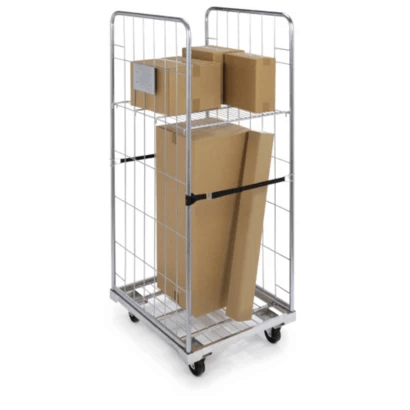 |
Rolls secure your goods on their sides and prevent them from falling out during handling. |
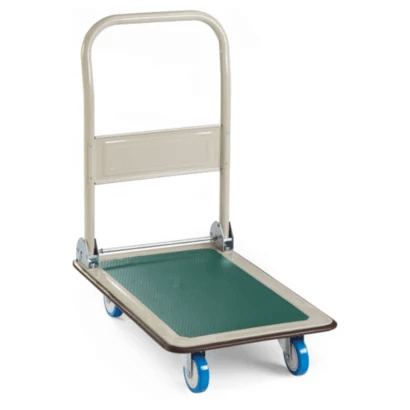 |
The handling trolley allows you to transport loads that do not need to be secured at the sides. |
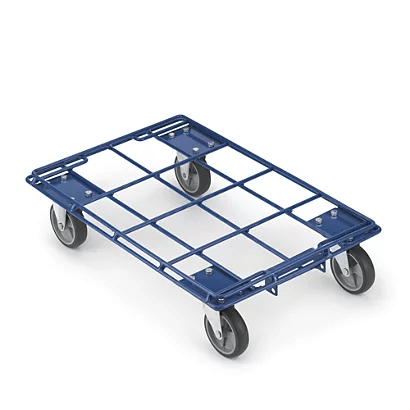 |
Rolling trays and corners help you move loads that are neither too heavy nor too bulky, over short distances. |
To find out more, read our article on industrial trucks.
Pallet trucks
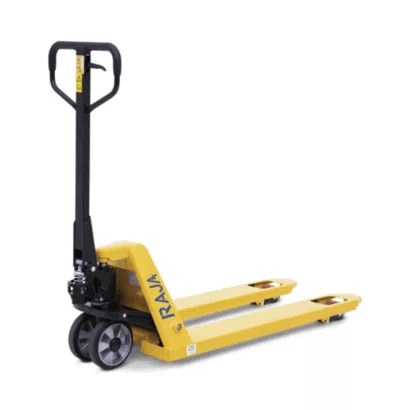
To transport your pallets to your logistics trucks with minimum effort, you need efficient pallet trucks.
These are available in different lift heights, in manual or electric versions, and adapted to different types of environment. Make sure you choose pallet trucks with anti-TMS properties, to really make your hauliers’ jobs easier.
To find out more, see all the criteria for choosing your pallet truck here.
Straps
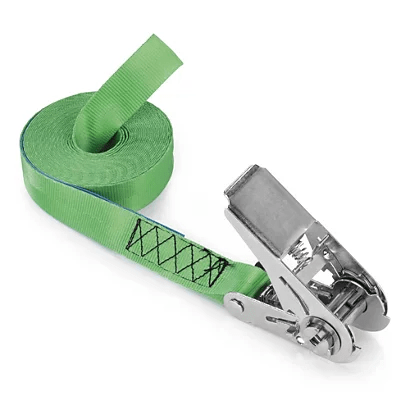
Straps can be used tosecure boxes or bins to your trolleys, or to stabilise pallets on a pallet truck during transport.
They may also be needed to secure loads in the lorry itself, to make them as stable as possible during transport.
Choose them according to the load to be secured and their resistance to the conditions in which they will be handled.
Stretch film
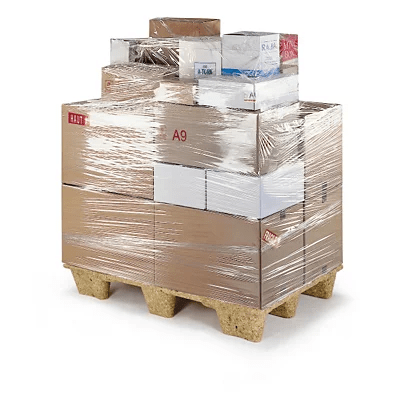
Stretch film is recommended for providing extra protection for goods (and pallets in particular) during transport in the logistics truck.
Depending on the type of film you choose, it can be applied to your goods using a machine specifically dedicated to pallet wrapping (a stretch wrapping machine), or it can be applied manually.
You now have all the knowledge you need to choose your logistics lorries or commercial vehicles, and equip them for optimum goods transport.
















